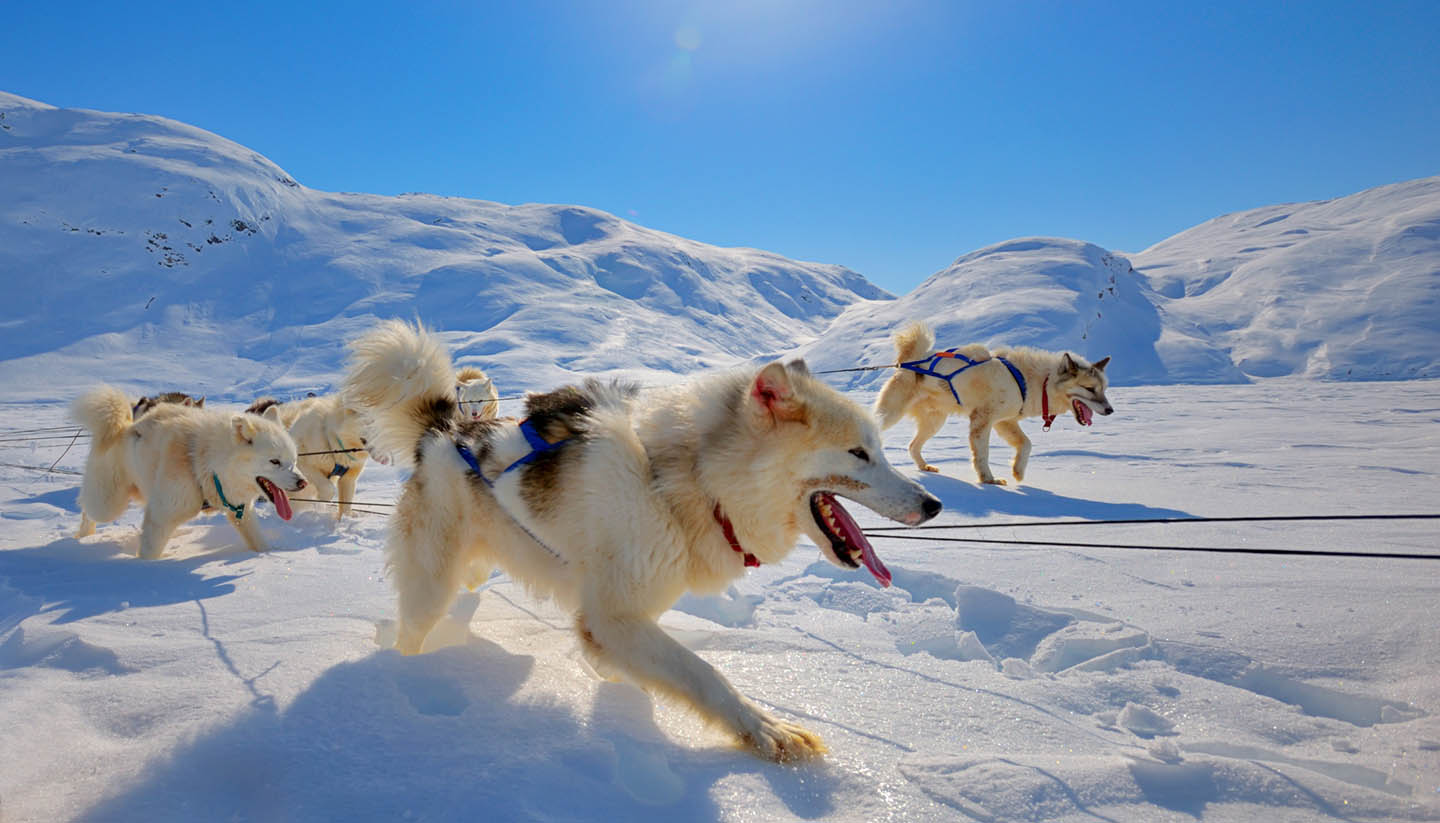Greenland Weather, climate and geography
Weather and climate
Best time to visit
Greenland has an Arctic climate, but owing to the size of the country there are great variations in the weather. As the climate graph shows, winters can be severe and the summers comparatively mild, particularly in areas which are sheltered from the prevailing winds. Precipitation, mostly snow, is moderately heavy around the coast. The north of the country, and much of the interior, enjoys true Arctic weather, with the temperature only rising above freezing for brief periods in the summer.
Conditions in all parts of the country can become hazardous when there is a combination of a low temperature and a strong wind. Local advice concerning weather conditions should be followed very carefully. Nevertheless, the summer months are suitable for a wide range of outdoor activities.
Required clothing
Good-quality windproof and waterproof clothes, warm layers and moulded sole shoes at all times of the year; also some slightly thinner clothes - it is important to be able to change clothing during a day's climbing as temperatures can vary greatly during one day. Sunglasses and protective sun lotion are strongly advised. In July and August, mosquitoes can be a problem, especially inside the fjords and so a mosquito net can prove indispensable. Extra warm clothes are necessary for those contemplating dog-sledge expeditions. Extra clothes are not always available for hire in Greenland.
Geography
Greenland is the world's biggest island. The surrounding seas are either permanently frozen or chilled by cold currents.
The inland area is covered with ice, stretching 2,500km (1,500 miles) north-south and 1,000km (600 miles) east-west. In the centre, the ice can be up to 3km (2 miles) thick.
The ice-free coastal region, which is sometimes as wide as 200km (120 miles), covers a total of 410,449 sq km (158,475 sq miles), and is where all of the population is to be found. This region is intersected by deep fjords which connect the inland ice area with the sea.



